Divisive Ayodhya temple project has India in jitters all over again
by - 13th January 2016
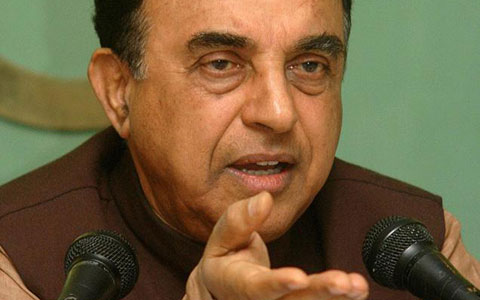
Police and paramilitary forces stood guard outside the University of Delhi’s Arts Faculty last week as students protested against a two-day seminar that could re-ignite communal tensions.
The conference on the future of the controversial Ayodha temple complex in Uttar Pradesh on Friday (9 January) was organised by Arundhati Vashishtha Anusandhan Peeth (AVAP – see Note), the research wing of the right-wing Hindu organisation Vishwa Hindu Parishad (VHP).
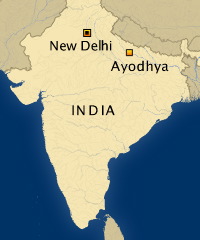 It marks renewed efforts to pressure the government and courts to allow construction of the controversial Ram Janma Bhoomi temple – meaning temple of Ram’s birth - on a former mosque site in Ayodhya in Uttar Pradesh, heartland of the poverty-stricken ‘Hindi belt’.
It marks renewed efforts to pressure the government and courts to allow construction of the controversial Ram Janma Bhoomi temple – meaning temple of Ram’s birth - on a former mosque site in Ayodhya in Uttar Pradesh, heartland of the poverty-stricken ‘Hindi belt’.
The site is claimed as the birth-spot of Rama – seventh avatar or incarnation of the Hindu god Vishnu – and there is some slender evidence that there was an ancient temple to Ram on the site.
It was the practise of the conquering Mughal imperialists to build mosques on Hindu sacred sites to consolidate their supremacy, and in 1528, two years before he died, Emperor Babur commanded his general Mir Baqi to build a mosque at the site and named it the Babri Masjid – Babur Mosque.
For more than a hundred years the site has been a grandstand for religious identity, some of it affecting the worldwide Indian diaspora.
A vast mob of 100,000 Hindu volunteers – karsevaks – ran amok there on 6 December 1992, destroying the mosque and triggering the massacre of more than a thousand people across India, Pakistan and Bangladesh.
Repurcussions were also felt in UK.
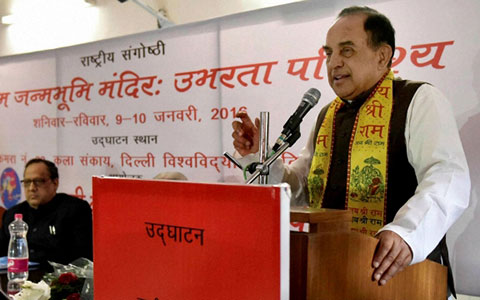
Protesting students and faculty members argue that allowing the VHP to use the premises of a public university for a seminar on the subject was akin to communalising education and the campus.
Dr Sanjeev Kumar HM, Professor of Political Science at the University of Delhi, told Lapido that this was part of efforts by the Hindu right-wing to control the discourse over this issue.
‘An important step towards establishing hegemony is to control educational institution,’ he said.
However, another academic Dr Sanjay Kumar (no relation) who is Professor of Hindi at the Satyawati College in the University of Delhi and who coordinated the AVAP event, argued that the seminar was more academic than political.
‘This is a democratic country, if people want to protest an academic seminar then they can do so, but we will continue to do our work.’
He added that this seminar would raise awareness and help untangle the web of legality that surrounded the issue.
Deity
The Ram Janma Bhoomi Temple movement refers to the political and cultural wrangle by Hindu nationalist organisations, such as the VHP and Rashtriya Swayamsevak Sangh (RSS), and the Bharatiya Janta Party among others, to make social capital out of ‘rebuilding’ a temple that may not have existed to mark the ‘birthplace’ of popular Hindu deity Ram.
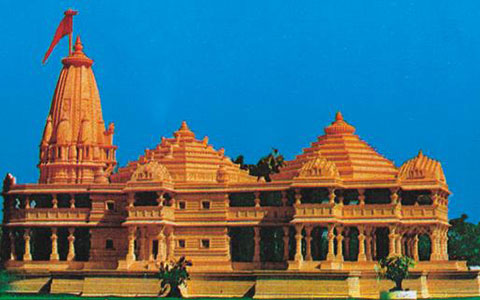
Hindu organisations quote a mix of ancient texts and modern travelogues in support of their case.
In 2003, the Allahabad High Court ordered the Archaeological Survey of India (ASI) to excavate the disputed site and it presented evidence that there were indeed archaeological features under the mosque.
Historians have repeatedly expressed reservations however over what they describe as the ‘vague’ and ‘biased’ nature of the ASI’s report.
The Allahabad High Court divided the disputed land into three parts in 2010, among Hindu Maha Sabha, the Sunni Wakf Board, and Nirmohi Akhara – the three main parties to the case.
However, in 2011 an Indian Supreme Court ruling stayed the high court’s order.
Mobilisation
While the demolition of the Babri mosque in 1992 is considered the watershed year for right-wing Hindu mobilisation, the modern roots of the controversy go back to the nineteenth century.
The first communal clash over the mosque/temple in modern history was recorded in 1853. In 1859 the British administration had the courtyard fenced into separate areas for worship by Hindus and Muslims.
Political scientist Dr Sanjeev Kumar argues that despite these divisions, at least in post-independence India, the issue of the temple is not simply a Hindu versus Muslim dispute, but is inexorably linked to the politics of India in general, and Uttar Pradesh in particular.
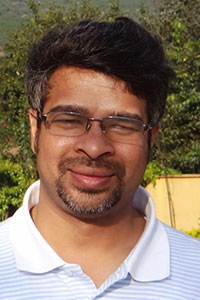 ‘The 1990s was a time when Dalit politics was coming to the fore, with parties like the Bahujan Samaj Party (BSP) and Samajwadi Party (SP) politicising the identity of the margins, including that of Muslims,’ he said.
‘The 1990s was a time when Dalit politics was coming to the fore, with parties like the Bahujan Samaj Party (BSP) and Samajwadi Party (SP) politicising the identity of the margins, including that of Muslims,’ he said.
To respond to this fragmentation of the electorate, the BJP had put its weight behind the Ram Janma Bhoomi temple as a means to mobilise all Hindus – divided by caste, ethnicity, language and class – into one political base.
It is perhaps no surprise that in November 1989, the VHP asked a Dalit to lay the foundation stone for the temple at a site close to the Babri mosque.
Yet, unlike the ‘cultural and social’ Hindu organisations like the VHP and the RSS, Premier Narendra Modi’s Hindu nationalist BJP party has a more tentative track record on the issue.
While it has supported the building of the temple, it is simultaneously trying not to be straitjacketed by the issue as a single party issue.
During the 2014 election, Modi drew flak from a number of Hindu organisations for saying he wanted to build ‘toilets not temple’, appearing to make light of the BJP election manifesto promise to support the temple project.
Atrocity
Subramanian Swamy, a senior BJP leader and chairman of AVAP described the reconstruction of the Ram Temple as ‘righting a historical atrocity’ in his inaugural speech at the seminar.
He added he was confident that the Supreme Court would allow construction of the temple.
Ram the avatar is projected as maryada purushottam – the ideal man – and his reign as king of Ayodha – Ram Rajya – is cited as an example of good governance.
The idea of Ram Rajya is evoked ubiquitously by politicians and parties of all hues including the BJP, RSS and even Mohandas Gandhi.
The Ram temple is thus justified as an attempt to inculcate desirable values into society more broadly, and stem what Swamy called, ‘the wave of dangerous cynicism amongst the youth’.
Of the many mosques that Hindu organisations assert were built atop destroyed temples, the Babri Mosque is one of the few that is embedded in the Hindu public imagination, along with the Gyanvapi mosque in Varanasi and the Shahi Idgah mosque in Mathura.
But more than the other two mosques, replacing the Babri Masjid with the Ram Janma Bhoomi temple has become a symbolic goal to prove that Hindu India has finally overcome a servitude imposed by the Muslim invaders.
Given this history, the archaeological evidence of whether a Ram temple existed previously is rendered immaterial; the claim for the temple is now a matter of faith.
‘It [Ram temple] is a public interest which is akin to the national interest of the Indian Republic, the fulfilment of which is an essential obligation of the state,’ reads the website of AVAP.
Asked how building the temple was in the public and national interest, Dr Sanjay Kumar told Lapido that since the temple issue had created animosity between Hindus and Muslims, it needed to be solved urgently by the court.
He added, ‘Ram is after all India’s culture. We must protect our culture.’
NOTE: Indicative of the religious inflexion in India’s current political establishment, is the transliteration of one of its most prominent political research bodies, AVAP. It stands for Arundhati Vashishtha Anusandhan Peeth, meaning respectively, the Hindu scholar goddess Arundhati, who was a disciple of the goddess Savitri. Vashishtha means excellent, Anusandhan means research or investigation, and Peeth means Centre.
